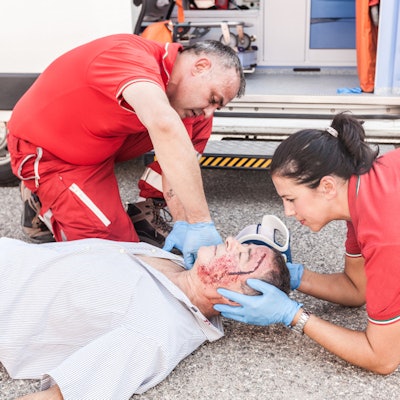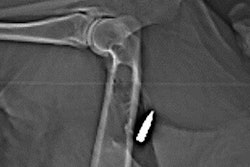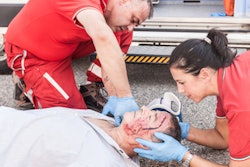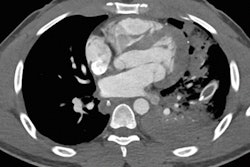
There are three major characteristics that predict which patients presenting with multiple traumatic injuries will have their injury overlooked on a whole-body CT exam, according to an article published online August 7 in Radiology. Identifying these risk factors early could help improve injury detection.
Currently, whole-body CT is the recommended standard of care for managing patients with multiple traumas, noted senior author Dr. Ingrid Millet, PhD, and colleagues from various healthcare institutions in France. Despite its potential to improve patient survival, the imaging technique requires long scanning and interpretation times, and it has been plagued by a high rate of missed injuries.
"A challenge for the radiologist performing and interpreting whole-body CT scans is managing and interpreting hundreds of CT images ... quickly and accurately to identify any life-threatening or other important diagnoses as fast as possible," wrote Dr. Robert Novelline of Massachusetts General Hospital in an accompanying editorial. "It would be expected that certain injuries may be overlooked at the initial interpretation of whole-body trauma CT scans."
Secondary readings of whole-body CT scans have been proposed as a way to minimize the number of injuries missed, but the added interpretation time and potential bump in costs could offset this benefit, Millet and colleagues noted. Yet another way to improve the detection of traumatic injuries may be to determine specific radiologic and clinical markers that are associated with missed injuries.
To test this idea, the group examined whole-body CT scans of patients presenting with multiple traumatic injuries at 26 hospitals in France between February 2011 and September 2016. Radiologists at the Imadis teleradiology center in Lyon interpreted the CT scans, with a different radiologist conducting a secondary review within 12 to 48 hours.
Among nearly 6,000 injuries on more than 2,300 whole-body CT exams, radiologists uncovered 530 injuries (8.8%) on 304 scans that were missed on the first reading. Nearly 20% of these missed cases involved clinically significant injuries, which led to a change in medical care for 38 patients.
The researchers found that three patient factors correlated with a statistically significant increase in risk for these overlooked injuries:
- Having injuries in more than two locations
- Having an initial clinical status of "severe"
- Being older than 30 years
Patients older than 30 were at the greatest risk of having an injury missed -- almost three times as likely as other patients.
| Predictors for overlooked traumatic injuries on whole-body CT | |
| Patient trait | Odds ratio |
| Age older than 30 years | 2.8 |
| Initial "severe" clinical status | 1.9 |
| More than 2 injured body parts | 1.4 |
What's more, the area under the curve for predicting the likelihood of a missed injury using these variables was 64%.
"Those markers could easily be identified in early stages of management of patients with multiple trauma to warrant a double reading and reporting," the authors wrote. "They should also be fully integrated into emergency radiology daily practice to improve patient safety and quality care."




















